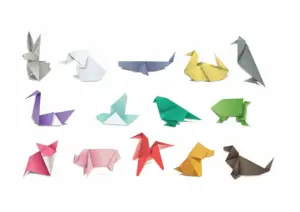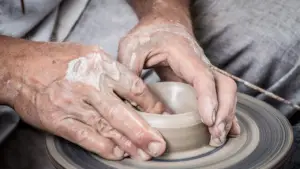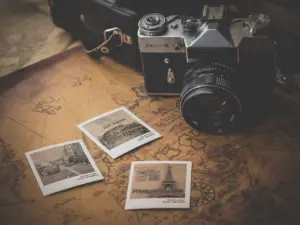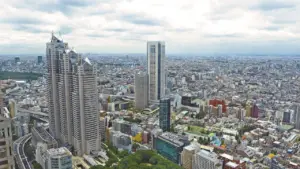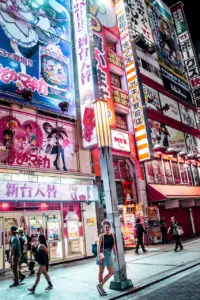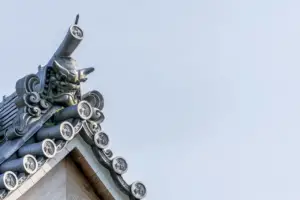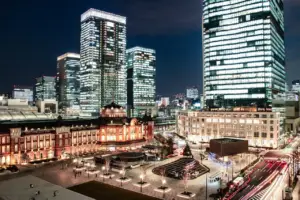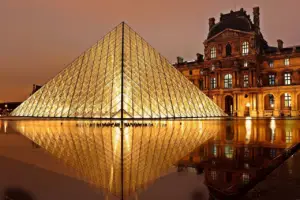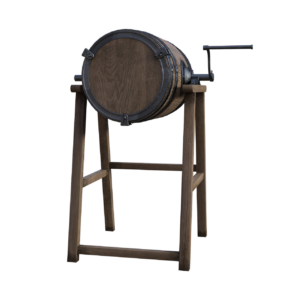Are you an art and history enthusiast planning a trip to Japan? Look no further than these ten museums that are sure to satisfy your curiosity and passion. From Tokyo to Hiroshima, each museum offers a unique perspective on Japan’s rich cultural heritage and artistic traditions.
Start your journey at the Edo-Tokyo Museum in Tokyo, which offers a fascinating look into the city’s history during the Edo period.
Then, head to the National Museum of Japanese History in Chiba, where you can explore exhibits on Japanese archaeology, history, and culture.
Next, visit the Kyoto National Museum in Kyoto, which boasts an impressive collection of Japanese art and artifacts.
And don’t miss the Hiroshima Peace Memorial Museum in Hiroshima, which tells the story of the atomic bomb and its impact on the city and its people.
These are just a few of the many museums in Japan that are waiting to be discovered.
Key Takeaways
- Japan boasts a wide range of museums showcasing its rich history, culture, and art, with options ranging from traditional to contemporary exhibits.
- Must-visit museums for art and history enthusiasts include the Kyoto National Museum, Suntory Museum of Art, 21st Century Museum of Contemporary Art, and Ghibli Museum.
- These museums offer a unique and immersive experience, with interactive exhibits, outdoor sculpture gardens, and opportunities to participate in traditional tea ceremonies.
- The Hiroshima Peace Memorial Museum is a powerful reminder of the importance of promoting peace and understanding in our world today.
Edo-Tokyo Museum in Tokyo
You’ll absolutely love the Edo-Tokyo Museum in Tokyo – it’s got all sorts of fascinating artifacts and exhibits that’ll transport you back in time!
The museum is dedicated to preserving and showcasing the history and culture of Tokyo during the Edo period, which lasted from 1603 to 1868.
As soon as you step inside, you’ll be greeted by a life-sized replica of the Nihonbashi Bridge, which was once the center of Tokyo’s bustling commerce.
The exhibits at the Edo-Tokyo Museum are incredibly detailed and informative, providing a comprehensive look at life in Edo-era Tokyo.
You’ll get to see everything from traditional clothing and furniture to full-scale replicas of famous buildings and structures.
One of the most impressive exhibits is the Edo Zone, which features a recreation of a typical Edo neighborhood complete with shops, homes, and even a kabuki theater.
Whether you’re a history buff or just interested in learning more about Tokyo’s past, the Edo-Tokyo Museum is a must-visit destination.
National Museum of Japanese History in Chiba
Located in Chiba, the National Museum of Japanese History showcases the rich cultural heritage and traditions of the country. This museum houses a vast collection of artifacts and exhibits that span over 10,000 years of Japanese history.
You can expect to see a wide range of historical objects, including pottery, textiles, weapons, and household items. The museum is divided into several exhibition halls, each one dedicated to a specific period in Japanese history.
One of the highlights of the museum is the Edo-Tokyo Gallery, which features life-sized models of streets and buildings from the Edo period. You can also learn about the different social classes during this time, from the samurai to the common people.
Overall, the National Museum of Japanese History is a must-visit destination for any history enthusiast looking to learn more about Japan’s fascinating past.
Kyoto National Museum in Kyoto
If you’re looking to discover the art and culture of Kyoto, the Kyoto National Museum should be at the top of your list.
The museum features both traditional and contemporary exhibits, providing a comprehensive look at the city’s rich history and artistic heritage.
If you’re lucky, you might even catch one of the tea ceremony demonstrations that take place at the museum!
Discover the Art and Culture of Kyoto
Immerse yourself in the rich and fascinating history of Kyoto through its diverse art and cultural offerings. Kyoto was once the imperial capital of Japan and its cultural center, and this legacy is reflected in its numerous temples, shrines, and museums.
Among the city’s many cultural highlights are the Kyoto National Museum, Nijo Castle, and the Gion District. The Kyoto National Museum, previously mentioned as a specific museum, is a must-visit for anyone interested in Japanese art and history. The museum has an extensive collection of paintings, ceramics, and other artifacts that trace the development of Japanese art from ancient times to the present day.
Meanwhile, Nijo Castle, a UNESCO World Heritage Site, offers a glimpse into the lives of the country’s rulers during the Edo period. Finally, the Gion District is a charming and atmospheric neighborhood that has preserved much of its traditional architecture and culture, including the art of geisha and maiko.
Overall, Kyoto is a treasure trove of art and culture that’s not to be missed.
Traditional and Contemporary Exhibits
Experience the best of both worlds as traditional and contemporary exhibits seamlessly blend together in Kyoto’s art scene. The city is home to a plethora of museums, galleries, and art spaces that showcase works of art from various periods and styles. Whether you prefer the classical beauty of ukiyo-e prints or the boldness of modern art, you will find something that speaks to you in Kyoto.
One of the best places to start your art journey in Kyoto is the Kyoto National Museum. This museum houses an extensive collection of Japanese art, including paintings, ceramics, and sculptures. You can see traditional works from the Heian and Kamakura periods, as well as contemporary pieces that showcase Japan’s modern art scene. Another must-visit is the Kyoto Museum of Modern Art, which features a range of works from the 20th century to the present day. Here, you can see the evolution of Japanese art from the Western-influenced Nihonga movement to the avant-garde works of the Gutai group. Check out the table below for more museums and galleries to explore in Kyoto.
| Museum/Gallery | Type of Art | Notable Exhibits | |
|---|---|---|---|
| Kyoto National Museum | Japanese art | Heian and Kamakura period paintings and sculptures | |
| Kyoto Museum of Modern Art | Modern and contemporary art | Nihonga and Gutai group works | |
| Suntory Museum of Art | Japanese and East Asian art | Tea ceremony utensils and screens | |
| The Museum of Kyoto | Local history and culture | Exhibitions on Kyoto’s festivals and traditional crafts | |
| Miho Museum | Antiquities and art | Ancient Egyptian, Greek, and Japanese works | … displayed in a stunning contemporary building designed by renowned architect I.M. Pei. |
Tea Ceremony Demonstrations
Don’t miss out on the chance to witness traditional tea ceremony demonstrations in Kyoto, where you can learn about the cultural significance and meticulous techniques behind this beloved Japanese tradition.
Here are four reasons why attending a tea ceremony demonstration is a must-do experience for any art and history enthusiast visiting Japan:
-
You’ll witness the intricate and precise movements of the tea ceremony, which has been refined over centuries and is a true art form.
-
The tea ceremony is steeped in symbolism and meaning, and experiencing it firsthand will deepen your understanding of Japanese culture and history.
-
You’ll have the opportunity to taste authentic Japanese tea and sweets, which are an integral part of the tea ceremony experience.
-
Finally, attending a tea ceremony demonstration will allow you to appreciate the beauty of Japanese aesthetics, from the zen-like simplicity of the tea room to the carefully crafted utensils used in the ceremony.
Hiroshima Peace Memorial Museum in Hiroshima
If you’re interested in learning about the devastating impact of the atomic bombing of Hiroshima, the Hiroshima Peace Memorial Museum is a must-visit destination.
The museum houses a range of artifacts and exhibits that provide a detailed account of the aftermath and recovery efforts that followed the bombing.
Through its message of peace and hope, the museum serves as a powerful reminder of the importance of working towards a world free from nuclear weapons.
Learn About the Atomic Bombing of Hiroshima
You’ll want to explore the exhibits that showcase the tragic events of the atomic bombing of Hiroshima, giving you a deeper understanding of the impact it had on Japan and the world.
The museum features a variety of artifacts, such as clothes and personal belongings of the victims, that provide a glimpse into the lives of those affected by the bombing. The displays also include photographs, videos, and documents that document the devastation and aftermath of the bombing, including the efforts to rebuild the city.
In addition to the exhibits, the museum also offers educational resources such as audio guides and guided tours. These resources provide valuable insights into the historical context and significance of the bombing, as well as the ongoing efforts to promote peace and nuclear disarmament.
By learning about the atomic bombing of Hiroshima, you’ll gain a deeper appreciation of the resilience and perseverance of the Japanese people, and the importance of promoting peace and understanding in our world today.
Artifacts and Exhibits on the Aftermath and Recovery
As you walk through the exhibits on the aftermath and recovery of the atomic bombing of Hiroshima, you’ll come across personal belongings such as clothing and other artifacts. These items provide a glimpse into the lives of the victims and the impact of the bombing.
You’ll see melted coins, broken eyeglasses, and even a child’s tricycle that was left behind in the aftermath. These artifacts serve as a reminder of the devastation that occurred on that fateful day and the innocent lives that were lost.
The exhibits also showcase the recovery efforts that took place after the bombing. You’ll learn about the reconstruction of the city and how the people of Hiroshima came together to rebuild their community.
The exhibits feature photographs, videos, and other displays that document the progress that was made. You’ll see how the city has transformed over the years and how it has become a symbol of peace and resilience.
Visiting these exhibits will give you a deeper understanding of the impact of the atomic bombing and the strength of the human spirit in the face of adversity.
Message of Peace and Hope
The message of peace and hope conveyed through the exhibits on the aftermath and recovery of the atomic bombing of Hiroshima is a powerful reminder of the resilience of the human spirit. As you walk through the museum, you will come across artifacts and exhibits that showcase the devastating impact of the bombing, but also the incredible strength and determination of the survivors. The museum’s message is clear: no matter how dire the situation may seem, humans have the power to overcome and rebuild.
One exhibit that stands out is the "Paper Crane"display, which features thousands of origami cranes folded by people from all over the world as a symbol of peace and hope. The display is a testament to the power of unity and compassion, and serves as a reminder that we can all make a difference in the world. The museum also features a 2 column and 4 row table that lists the number of casualties from the bombing, broken down by age and gender. The table is a sobering reminder of the tragic loss of life, but also serves as a call to action for visitors to work towards a more peaceful future. Overall, the message of peace and hope conveyed through the exhibits at the Hiroshima Peace Memorial Museum is a must-see for anyone interested in history, art, or the resilience of the human spirit.
Tokyo National Museum in Tokyo
Visitors can easily spend a whole day at Tokyo National Museum, exploring the extensive collection of Japanese art and artifacts. Established in 1872, this museum is one of the oldest in Japan and showcases the country’s cultural heritage from ancient times to the present day.
The museum’s permanent collection includes over 110,000 objects, including paintings, sculptures, ceramics, calligraphy, and textiles. One of the highlights is the comprehensive collection of samurai armor and weapons, which provides a glimpse into Japan’s feudal past.
Apart from the permanent collection, Tokyo National Museum also hosts special exhibitions throughout the year, featuring works from both Japan and abroad. These exhibitions provide a deeper understanding of the cultural exchanges that have taken place between Japan and other countries.
The museum’s spacious galleries and tranquil gardens offer a serene environment for visitors to appreciate the beauty and complexity of Japanese art and history. With its rich collection and educational programs, Tokyo National Museum is a must-visit destination for anyone interested in Japanese culture and history.
21st Century Museum of Contemporary Art in Kanazawa
Now that you’ve explored the Tokyo National Museum, it’s time to move on to the 21st Century Museum of Contemporary Art in Kanazawa. This museum is a must-visit for those interested in modern and contemporary art. As soon as you enter the museum, you’ll be struck by its stunning architecture and design. The building itself is a work of art, with its circular shape and glass walls.
Here are some of the highlights you can expect to see during your visit:
- An impressive collection of contemporary art from both Japanese and international artists
- Interactive exhibits that encourage visitors to participate and engage with the art
- A beautiful outdoor sculpture garden
- A variety of events and programs, such as artist talks and workshops, that provide a deeper understanding of the art on display.
Overall, the 21st Century Museum of Contemporary Art is a must-visit for any art enthusiast visiting Japan. Its unique architecture and thought-provoking exhibits make it a standout among the many museums in the country. You’re sure to leave feeling inspired and enlightened.
Hakone Open-Air Museum in Hakone
As you make your way to Hakone, you can look forward to exploring the stunning open-air art museum that showcases a unique blend of contemporary and traditional sculptures.
The Hakone Open-Air Museum is the first of its kind in Japan, and it boasts an impressive collection of over 120 sculptures spread across its vast outdoor space.
The museum is nestled in the beautiful Hakone mountains, and its serene setting provides visitors with an immersive art experience that is both calming and inspiring.
One of the most notable features of the museum is its diverse collection of sculptures from renowned artists around the world. The museum’s outdoor space houses works by internationally acclaimed artists such as Pablo Picasso, Henry Moore, and Joan Miró.
In addition to its impressive sculpture collection, the museum also features indoor galleries that host temporary exhibitions that showcase the works of contemporary artists.
The Hakone Open-Air Museum is a must-visit for art enthusiasts and anyone who appreciates the beauty of nature and art coming together in perfect harmony.
Ghibli Museum in Mitaka
When you step inside the Ghibli Museum in Mitaka, you’ll feel like you’ve been transported into the whimsical world of Studio Ghibli’s animated films. The museum is dedicated to the work of Hayao Miyazaki, the renowned animator and co-founder of Studio Ghibli.
Here are four things you can expect to see and experience at the Ghibli Museum:
-
The building itself is a work of art, with its spiral staircase, stained-glass windows, and whimsical architecture.
-
You can watch short films that are exclusive to the museum, such as ‘Mei and the Kittenbus’and ‘Mr. Dough and the Egg Princess’.
-
The museum has a replica of Miyazaki’s workspace, where you can see his sketches and artwork up close.
-
There’s a rooftop garden that offers a lovely view of the surrounding neighborhood, complete with a giant robot from ‘Castle in the Sky’standing guard.
Overall, the Ghibli Museum is a must-visit for anyone who loves animation or Miyazaki’s films. It’s a magical place that’ll leave you feeling inspired and enchanted.
Frequently Asked Questions
What is the admission fee for each of these museums?
To answer your question about the admission fee for each of these museums, it varies depending on the museum you choose to visit. Some museums have a standard admission fee for adults, while others offer discounted rates for students or seniors. Additionally, some museums may have special exhibitions or events that require an additional fee.
It’s best to check the individual museum’s website or inquire at the ticket counter for specific pricing information. Overall, expect to pay anywhere from a few hundred to a few thousand yen for admission to these museums.
Are there any special exhibitions or events happening at these museums currently?
If you’re interested in visiting museums in Japan for art and history enthusiasts, you might be wondering if there are any special exhibitions or events happening currently.
Well, the answer is yes! Many of these museums have rotating exhibitions and events throughout the year. For example, the Tokyo National Museum currently has a special exhibition on the history of porcelain in Japan, while the National Museum of Modern Art in Kyoto has an exhibit on contemporary Japanese art. The National Museum of Japanese History in Chiba is showcasing a collection of ancient artifacts related to the history of Japan.
It’s always a good idea to check the individual museum’s website or social media pages to see what’s currently on display or upcoming events.
What is the history and significance of each museum’s building or location?
As an art and history enthusiast, you may be interested in learning about the history and significance of the buildings and locations of various museums in Japan.
Many of these museums are located in historic buildings that have been repurposed as cultural institutions.
For example, the Tokyo National Museum is situated in Ueno Park, a popular destination for cherry blossom viewing, and is housed in a building that dates back to 1938.
The Kyoto National Museum, on the other hand, is located in the Higashiyama district, a historic area known for its temples and shrines.
The museum itself is comprised of two buildings: the original Meiji-era structure and a more modern annex.
By delving into the history and significance of these buildings and locations, you can gain a deeper appreciation for the cultural treasures that these museums house.
Are there any restrictions on photography or filming inside these museums?
When visiting museums in Japan for art and history enthusiasts, you may wonder if there are any restrictions on photography or filming inside these establishments. The answer is yes, as many museums have varying policies regarding photography and filming.
Some may allow it but only without flash or tripods, while others may prohibit it altogether. It’s important to check each individual museum’s policy before attempting to take any photographs or videos.
Additionally, some exhibits or items may have further restrictions on photography or filming due to their fragility or cultural significance. It’s always best to respect these rules and ask for permission before attempting to take any photographs or videos inside the museum.
Are there any unique souvenirs or gifts available for purchase at these museums?
If you’re interested in finding unique souvenirs or gifts to take home from Japan’s art and history museums, you’re in luck! Many of these museums have gift shops that offer a range of items, from traditional crafts and ceramics to modern art prints and books.
For example, at the Tokyo National Museum, you can purchase replicas of ancient Japanese swords and armor, as well as traditional tea sets and calligraphy supplies. The Kyoto National Museum offers a selection of traditional textiles, including kimonos and obi belts, while the Hiroshima Peace Memorial Museum has a gift shop that sells origami paper cranes and other peace-themed items.
Whether you’re looking for a one-of-a-kind keepsake or a unique gift for someone special, Japan’s museums have plenty of options to choose from.
Conclusion
Congratulations! You’ve just learned about 10 amazing museums in Japan that are perfect for art and history enthusiasts like you. Each museum offers a unique experience that you won’t find anywhere else.
From the Edo-Tokyo Museum in Tokyo to the Ghibli Museum in Mitaka, there’s something for everyone. At the Edo-Tokyo Museum, you’ll learn about the rich history of Tokyo during the Edo period. The National Museum of Japanese History in Chiba will take you on a journey through Japan’s fascinating past. The Kyoto National Museum in Kyoto boasts an impressive collection of Japanese art and artifacts. And the Hiroshima Peace Memorial Museum in Hiroshima tells the story of the atomic bombing and its aftermath.
If contemporary art is more your style, head over to the 21st Century Museum of Contemporary Art in Kanazawa. You can admire works by both Japanese and international artists. For a truly unique experience, visit the Hakone Open-Air Museum in Hakone. You can view stunning sculptures set against the backdrop of beautiful natural scenery.
And of course, no trip to Japan would be complete without a visit to the beloved Ghibli Museum in Mitaka. You can immerse yourself in the magical world of Studio Ghibli.
Whether you’re a history buff or an art lover, these 10 museums in Japan are sure to impress. So what are you waiting for? Book your tickets now and get ready for an unforgettable journey through Japan’s rich cultural heritage!













